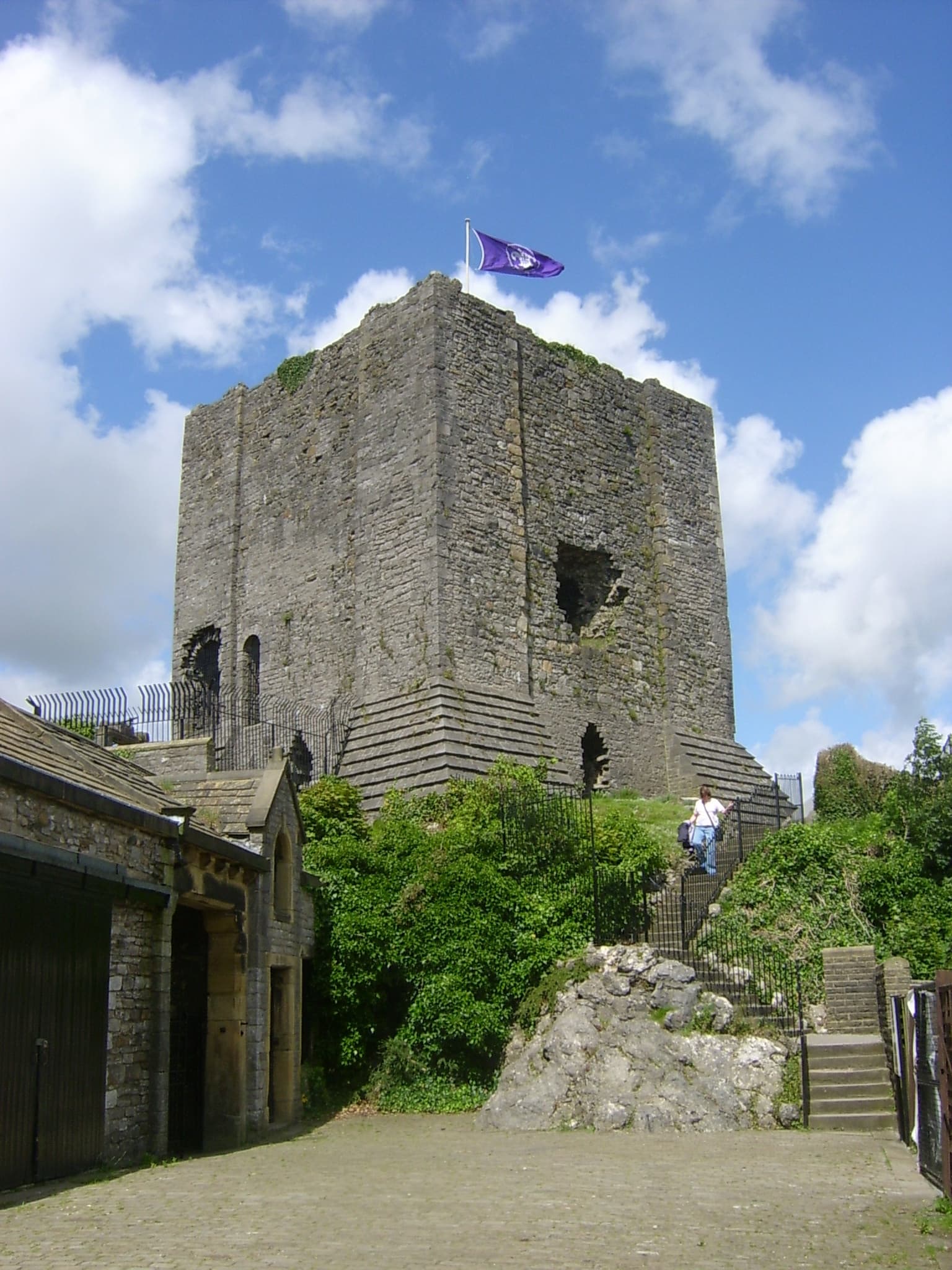Telephone: 01246 822844
Website: https://www.lancashire.gov.uk/leisure-and-culture/museums/clitheroe-castle-museum/
Owned by: Ribble Valley Borough Council
Opening times: There is free open access to the castle and a small admission fee to the museum, which is open daily except Christmas Day, Boxing Day and New Year’s Day. See the museum website for specific timings throughout the year.
Public access: Disabled access available and guide dogs welcome.
The remains of a three-storey-high castle keep and modern museum. Built in 1186 by Robert de Lacy, the Norman keep of the castle is reputed to be the second smallest in England. It has been suggested that a wooden structure may have preceded the stone foundation as this was an important strategic location. The Ribble Valley in which Clitheroe and its castle lie has been an important route since ancient times. A Roman road runs past the castle, leading to a Roman fort in the north east and towards the Fylde coast in the west.
The keep stands on a prominent outcrop of rock which provides a natural motte. The cramped stone building is enclosed within a curtain wall, only part of which remains. After the death of Henry de Lacy in 1311, the castle passed to the Earldom of Lancaster, and then became the property of the Duchy of Lancaster. The castle was used during the Wars of the Roses, when Edward IV arranged a budget for its repair. However, it seems to have soon been in a state of disrepair. Still standing almost three storeys high but now roofless, the keep was damaged by Parliamentary forces during the English Civil War. The castle was privately owned until 1920 when it was sold to the local council to establish a memorial to the First World War. Within the castle grounds is a museum, located in the eighteenth-century Castle House, which explains the castle’s history.






